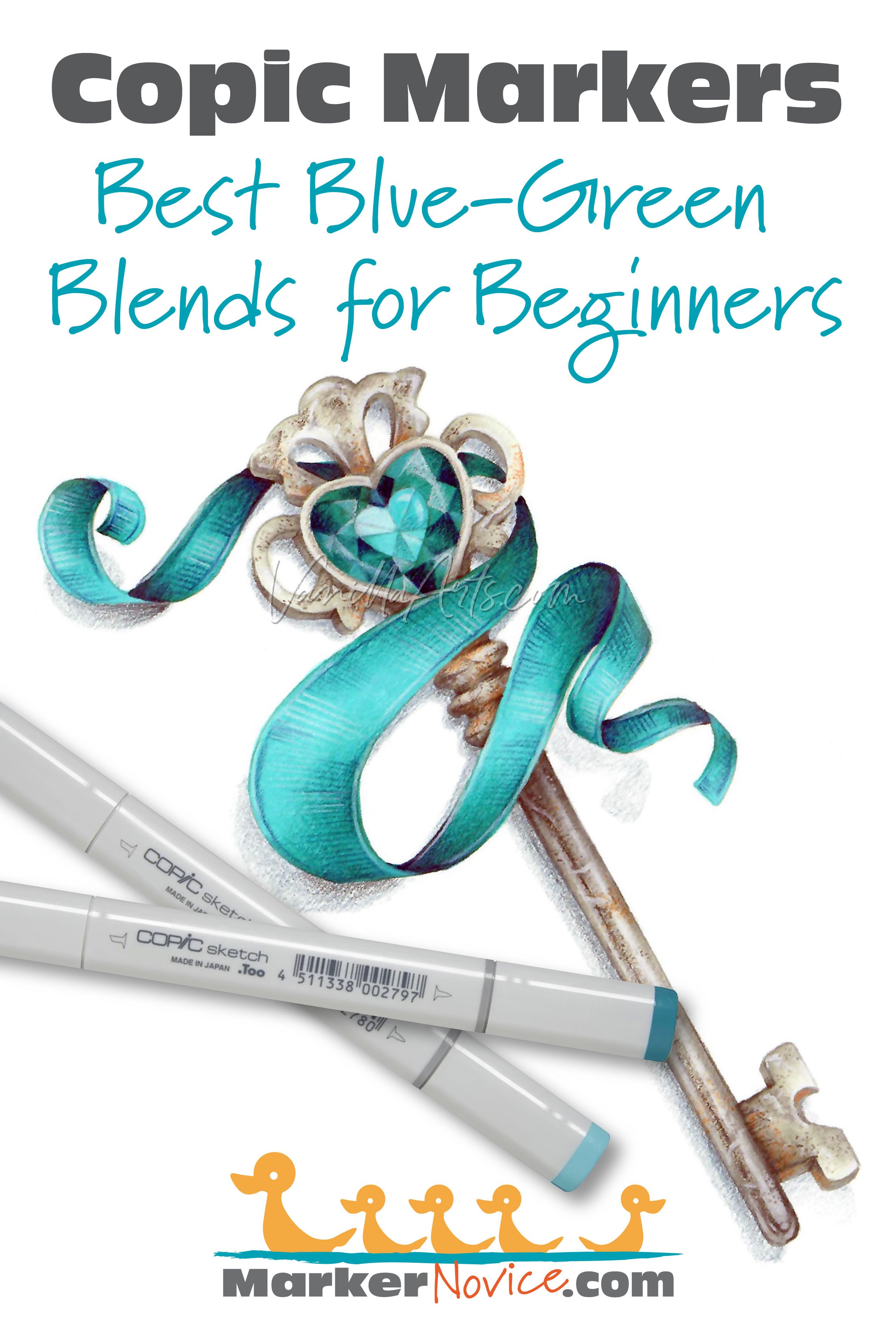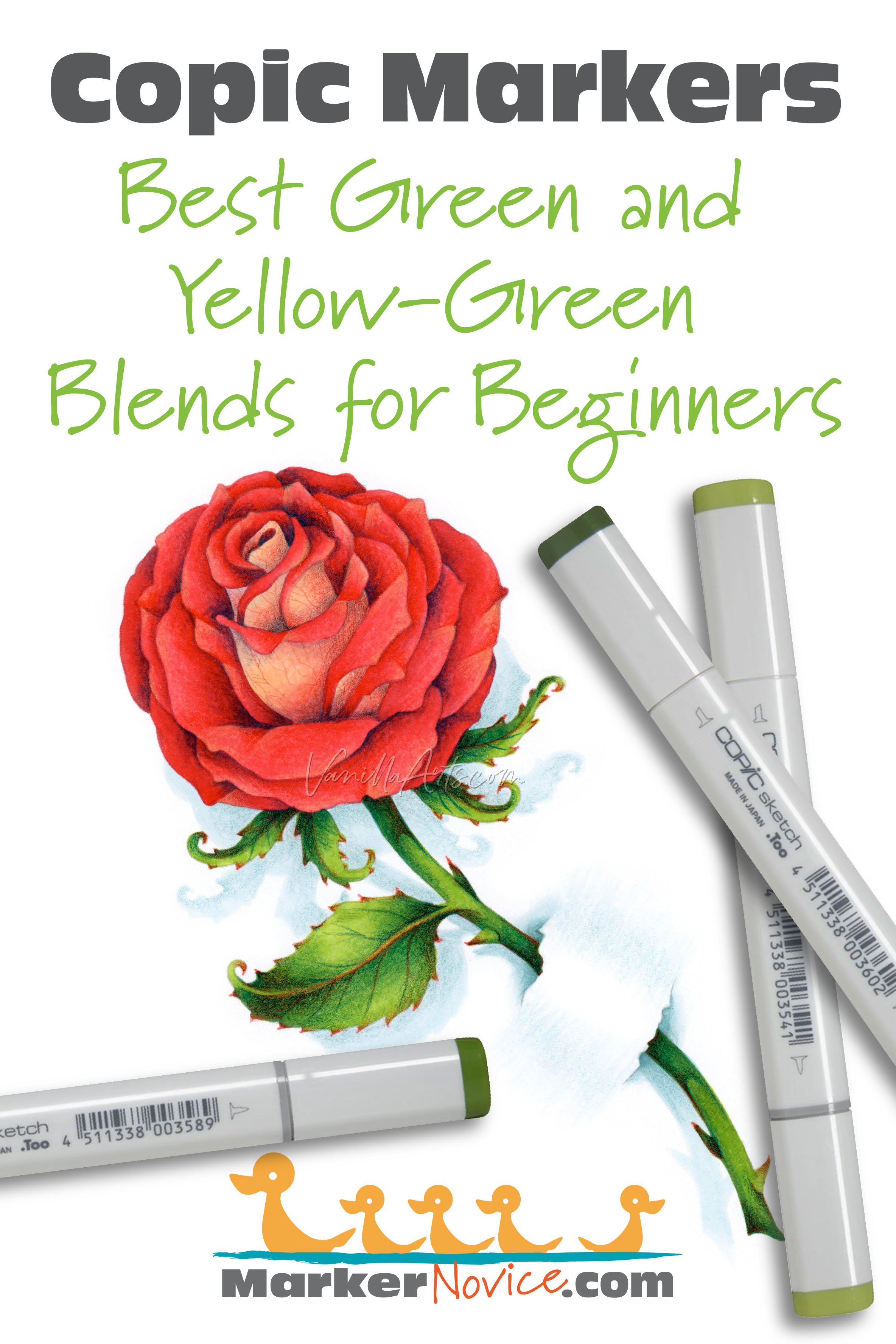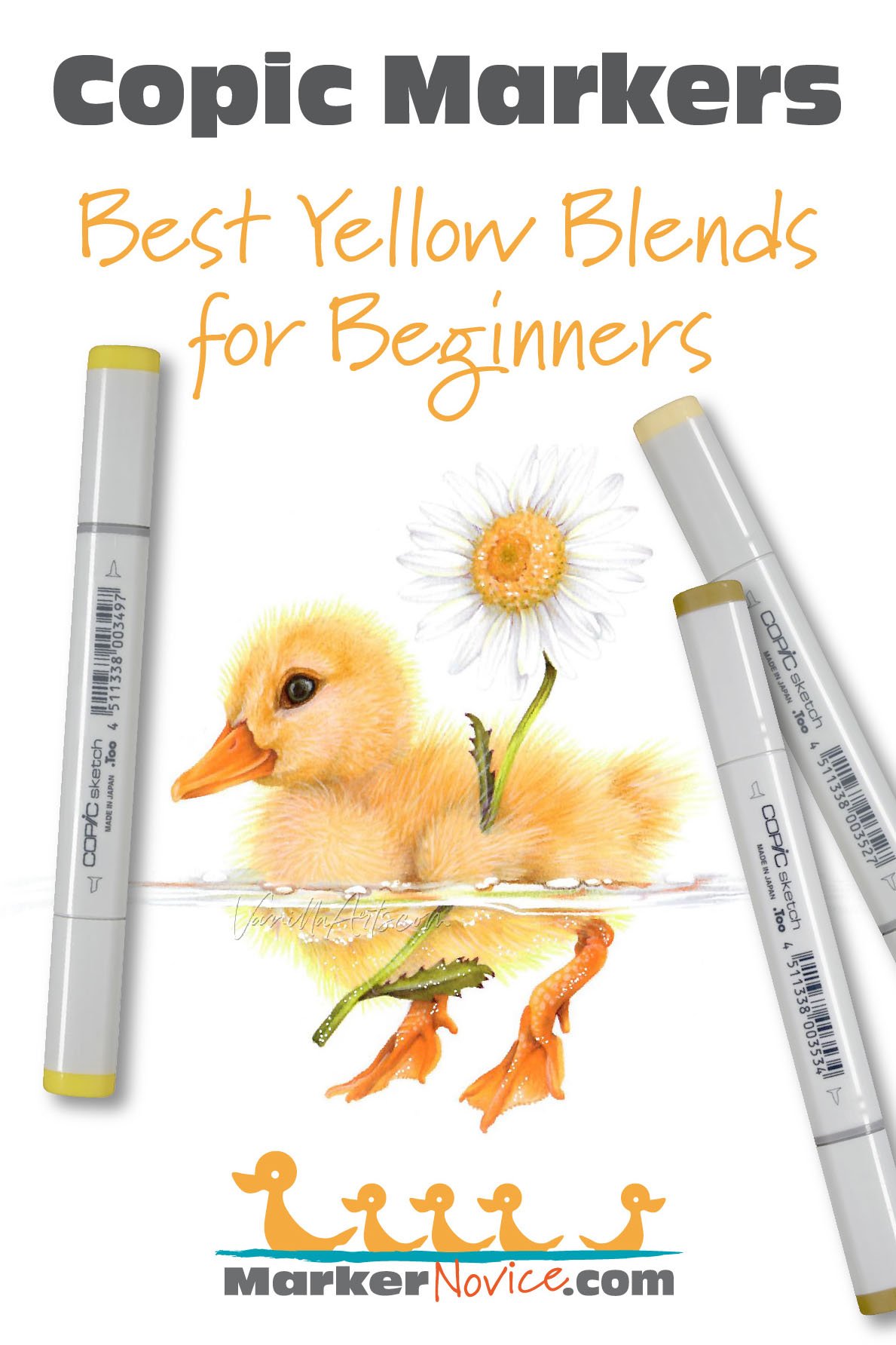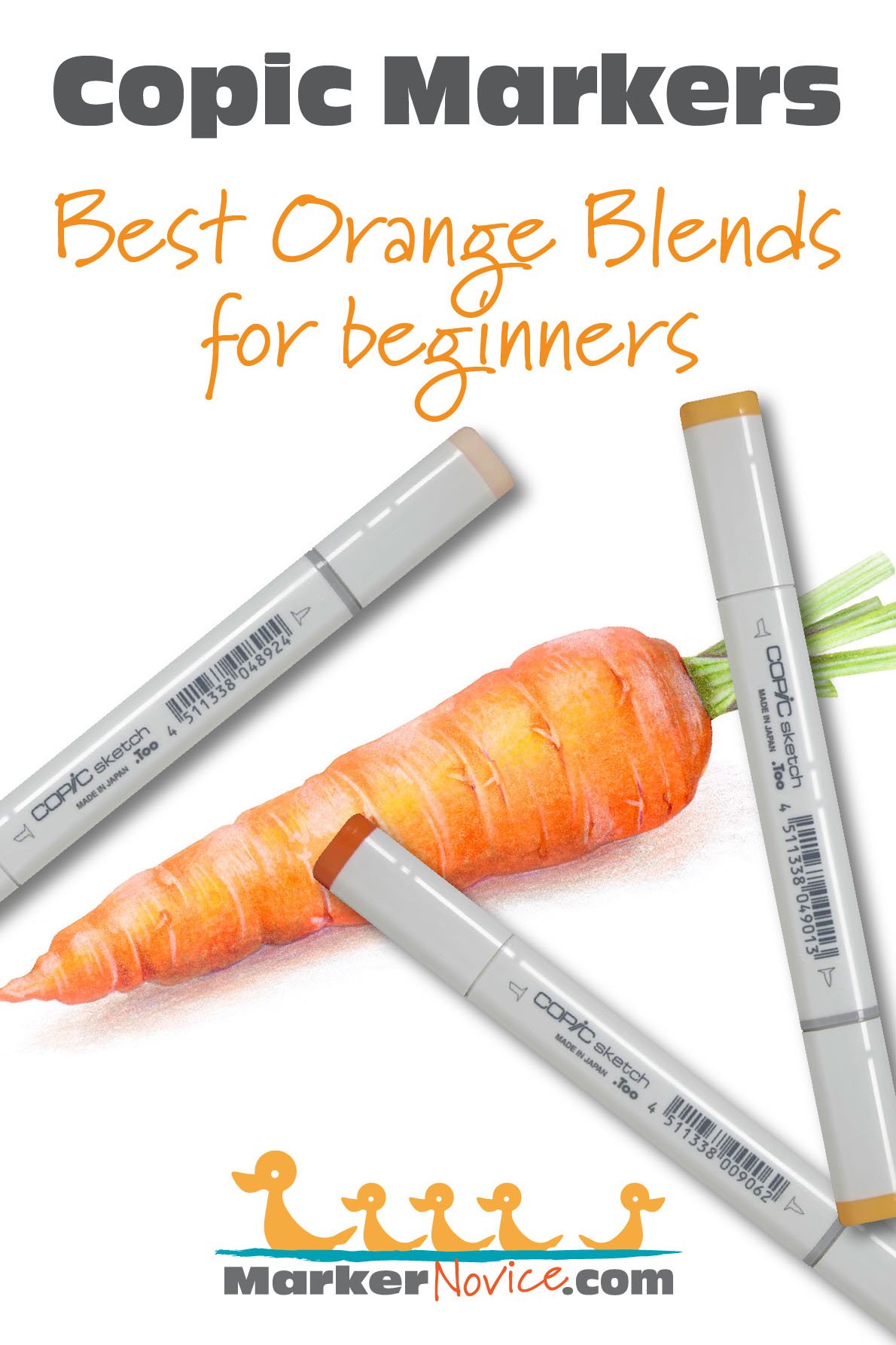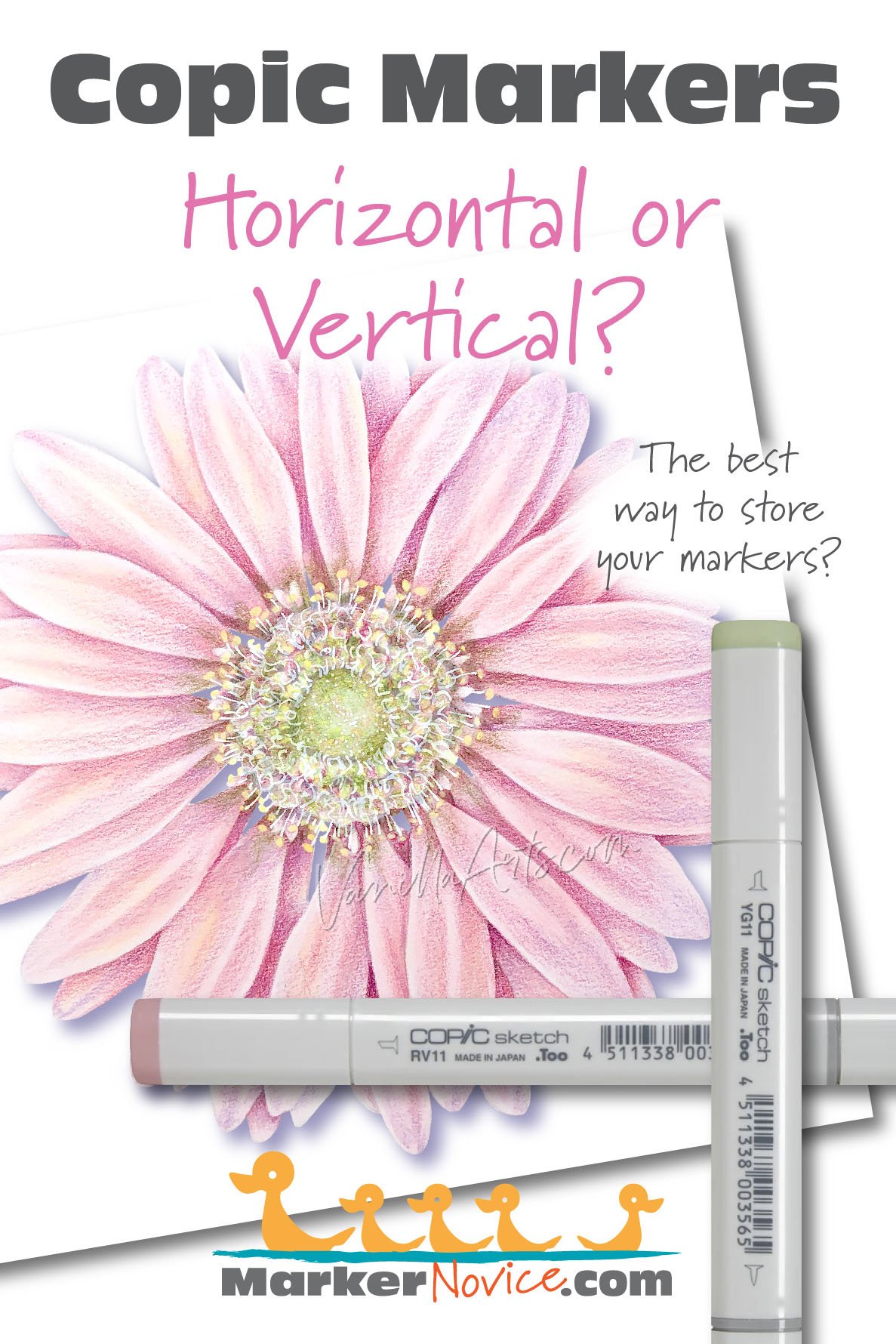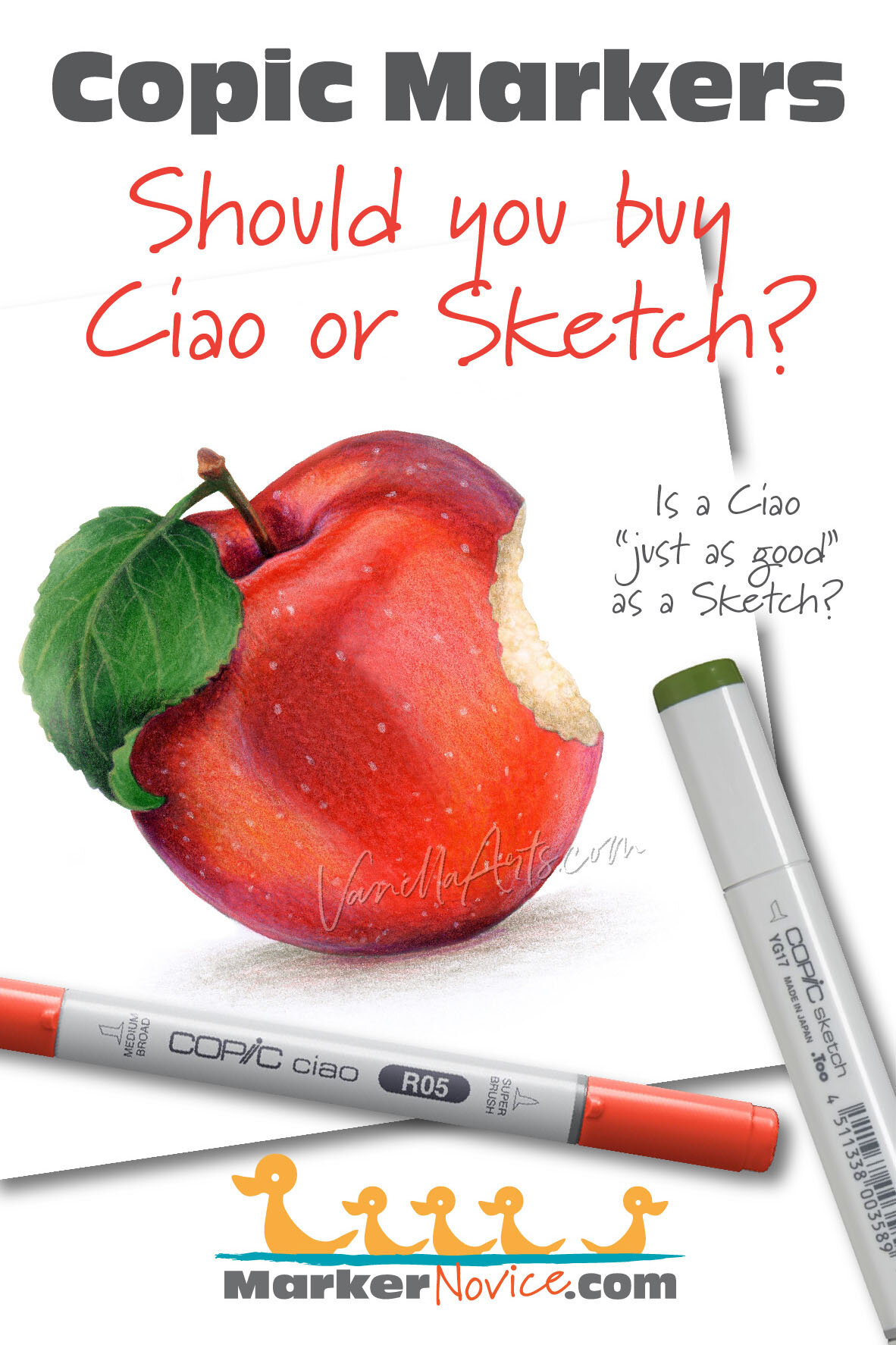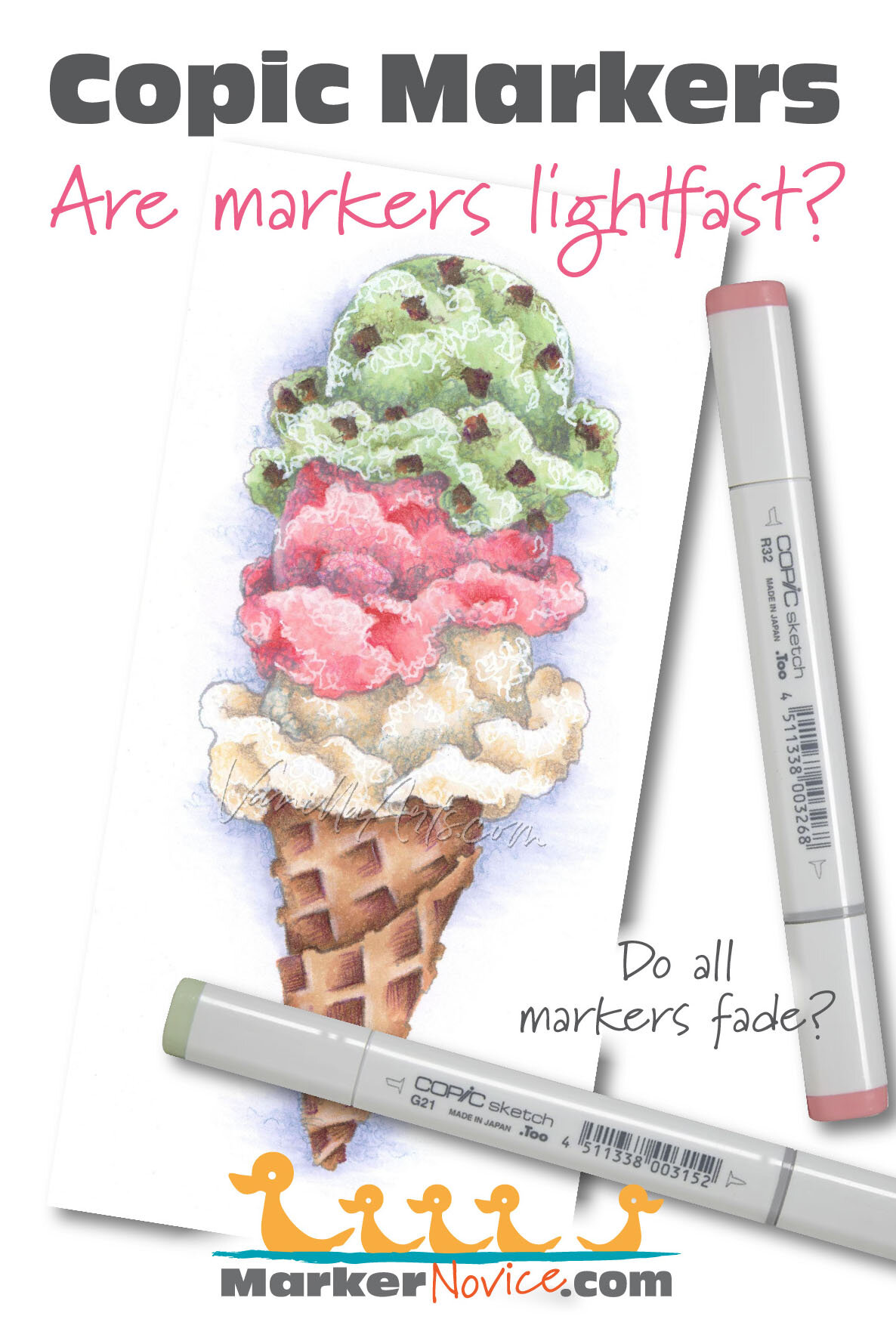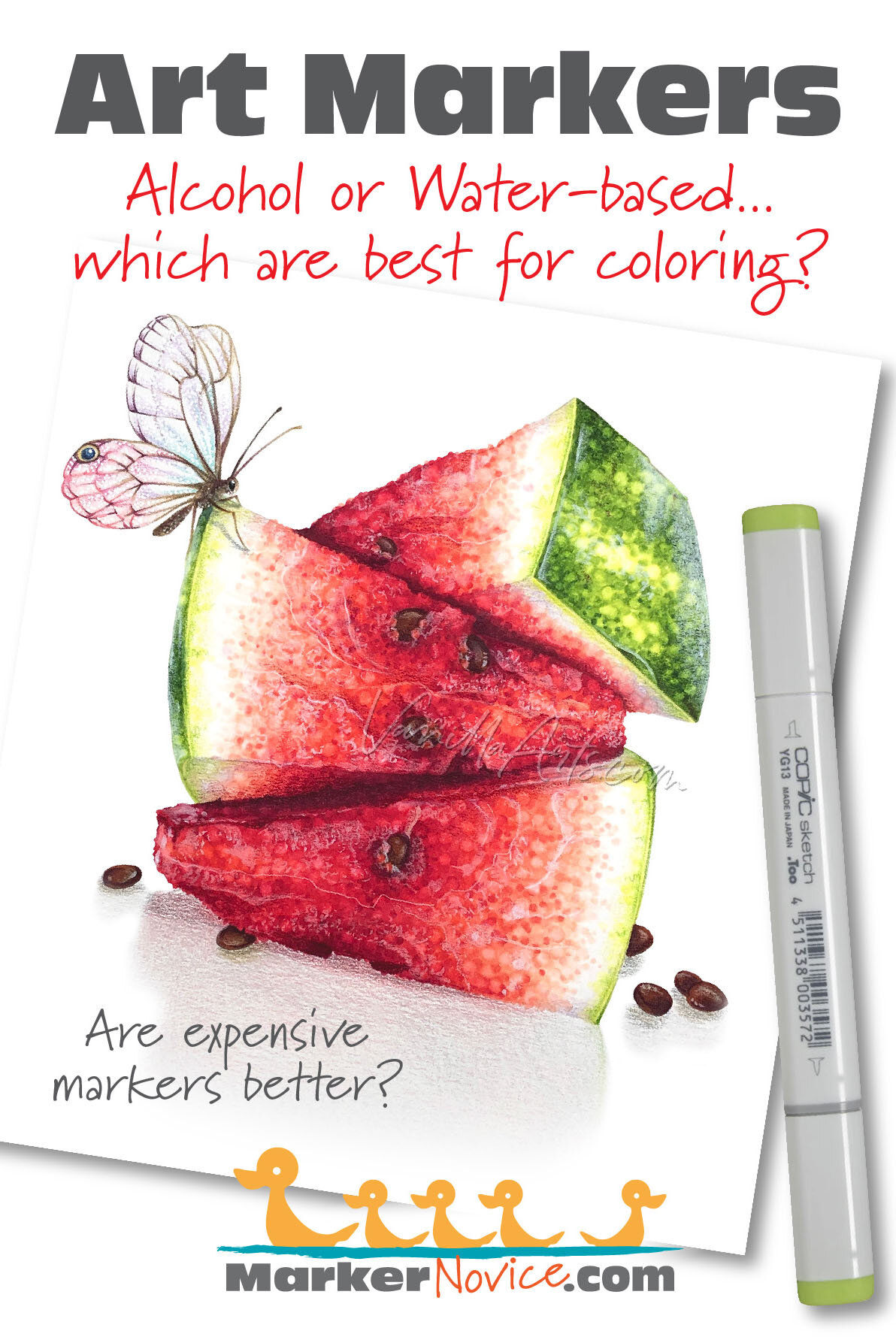Every Copic Marker has different characteristics based upon its unique ink formula.
Knowing how a color behaves will help you blend effectively and make art with confidence.
G19 Bright Parrot Green
Let’s take a closer look at this Copic Marker and its ink characteristics.
Temperature: A warm medium-dark green
Resemblance: Phthalo Green
Name: “Parrot Green” is a standard paint name but the name usually refers to a lighter color with stronger yellow tones. Copic often misses the mark on their color names which I blame on the language barrier from Japanese to English. In my opinion, this name is inaccurate and misleading.
Copic Styles: G19 is only available in Sketch and Classic style Copic markers.
Actual Value: N7 (this is significantly lighter than the number code indicates)
All Copics are measured on a Neutral Gray value scale. The last number on the cap is supposed to indicate value but we’ve found discrepancies where the actual ink value is different than cap designation.
Cap Accuracy: The colored plastic on the Sketch cap is darker than 4 layers of G19 ink. This combined with the inaccurate cap number is startling when you first use G19 as the color is lighter than expected.
Buildup: G19 reaches maximum color value at 3-4 layers. This color also looks blotchy at one layer but at two layers looks noticeably oily. There really isn’t a sweet spot between blotches and oil which makes this a hard color to work with and thus, I do not recommend G19 for beginners.
Shattering: Shatters into green with strong yellow color seeping out at the margins.
Chromatography testing shows this ink’s behavior when it comes in contact with #0 Colorless Blender (solvent). High shattering colors may leak unexpected color when you make corrections or attempt to blend with any color that has a high solvent to colorant ratio. Shattering is not bad, it’s just something to be aware of.
Staining: G19 stains the paper blue.
Lift: G19 can be lightened a bit but the paper will be permanently stained. The best you can hope for is to lighten mistakes enough to then camouflage them with another color.
See staining swatch. Sample was given 6 stripes of #0 Colorless Blender, drying between each stripe. Results indicate how much lifting you can expect.
Lightfast: G19, like several other G markers has an extremely odd fade. The color did not lighten but the swatch turned noticeably bluish. This is a blended ink (see shattering sample) and the yellow ink component faded entirely while the blue ink remained lightfast.
Samples were swatched on X-Press It Blending Card. 1 layer of ink was exposed to windowsill sunlight for 21 days. Approximately 10 hours of sun per day based on weather conditions. Note: we do not recommend displaying original Copic art under these conditions.
Natural Ink Family: G19 is the darkest marker in the G-Teen family. I stronly suspect G12 and G14 were shifted into this group and they’re not chemically related to G16, G17, or G19.
Family Members: G12, G14, G16, G17, G19
We include this information because many Copic users never think deeper than the letter groupings (R, BV, G, etc.). Every ink has its own temperature variations and underlying flavors. Understanding what an ink looks like in its different dilutions helps when creating your own blending combinations.
Complement: A medium deep red violet like RV66
Underpaint: We suggest BV23
This is simply one suggestion. Many possible colors exist. Test to find a color that pleases you.
Pushing Pencil: Prismacolor 931 Dark Purple is an excellent choice
VanillaArts.com (our sister site) teaches a Push & Pull technique for dimensional coloring. This is simply one suggestion. Many possible colors exist. Test to find a color that pleases you.
Looking for beautiful color palettes?
We absolutely love The Color Catalog 1 & 2 from Sarah Renae Clark. It puts hundreds of Copic friendly color palettes at your fingertips.
(note: affiliate link)























